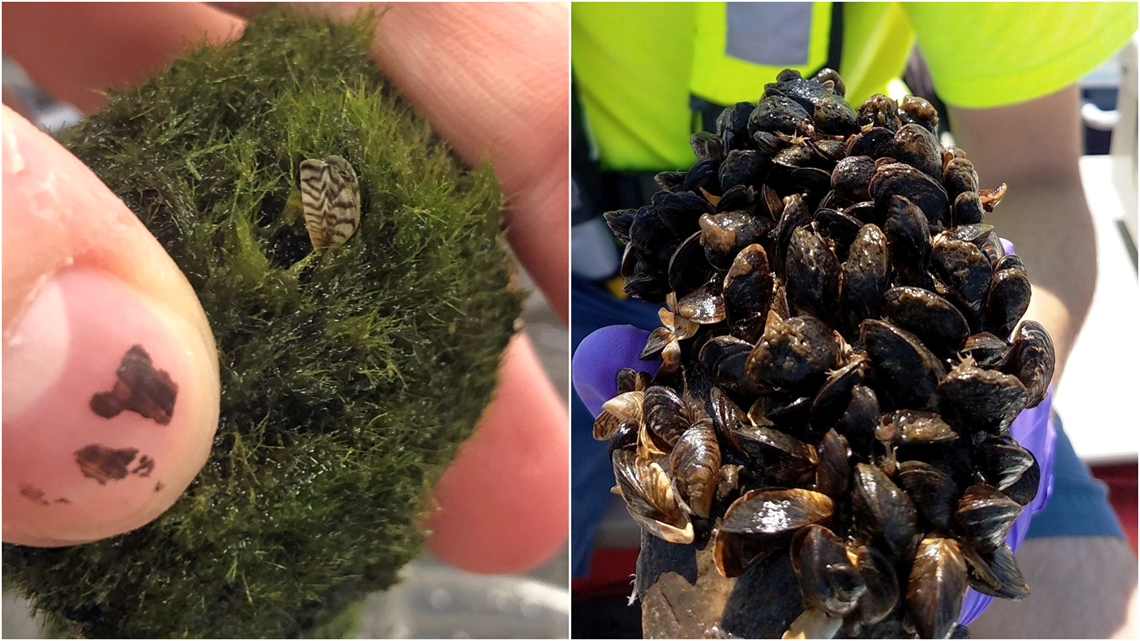‘Most destructive’ invasive species in U.S. may be hiding in moss balls throughout Missouri


The Threat of Zebra Mussels in Missouri

Introduction
The Missouri Department of Conservation (MDC) recently issued a warning about the presence of zebra mussels, one of the most destructive invasive species in North America, in seemingly harmless moss balls used in aquariums. These small black-and-white striped mollusks were discovered in the popular aquarium additive in Washington state, and there is a concern that the infected moss balls may have been distributed to buyers in Missouri as well.
Impact on Ecosystems
Infected moss balls containing zebra mussels pose a significant threat to local public and ecological systems. When aquarium water is poured down drains, zebra mussel larvae may be introduced to nearby bodies of water, leading to the disruption of aquatic ecosystems. Zebra mussels have the potential to clog power plants and drinking water intakes, decimate native freshwater mussels, and impact fisheries.
Actions to Take
MDC urges retailers and aquarium owners who purchased moss balls in the last year to check them for zebra mussels. If found, the moss balls should be decontaminated or disposed of properly. The U.S. Fish & Wildlife Service has provided guidelines for destroying infected moss balls and decontaminating affected aquariums:
- Infected moss balls should be placed inside a sealable plastic bag and frozen for at least 24 hours, or boiled in water for at least a full minute.
- The moss balls should be disposed of in the trash.
- Any boiling water used should be disposed of down a household drain.
- Collect any fish from the infected aquarium and place them in another uncontaminated container.
- Remove water from the aquarium and sterilize it by adding 1/3 cup of bleach per gallon of water. Let it sit for at least 10 minutes before disposing of the mixture down a household drain.
- Decontaminate the aquarium and accessories either by pouring 120 °F water and covering all accessories for at least five minutes, or by soaking the aquarium and all accessories inside using 1/2 cup of salt per gallon of water for at least 24 hours.
Past Warnings
This is not the first time that zebra mussels have attempted to infiltrate Missouri’s waters. A similar statewide warning was issued in 2021, highlighting the persistent threat posed by these invasive species.
Conclusion
The presence of zebra mussels in moss balls used in aquariums is a concerning issue that requires immediate attention. By following the recommended guidelines for decontamination and disposal, individuals can help prevent the spread of zebra mussels and protect local ecosystems. This effort aligns with the Sustainable Development Goals (SDGs), particularly Goal 14: Life Below Water, which aims to conserve and sustainably use marine resources.
SDGs, Targets, and Indicators
1. Which SDGs are addressed or connected to the issues highlighted in the article?
- SDG 6: Clean Water and Sanitation
- SDG 14: Life Below Water
- SDG 15: Life on Land
2. What specific targets under those SDGs can be identified based on the article’s content?
- SDG 6.3: By 2030, improve water quality by reducing pollution, eliminating dumping and minimizing release of hazardous chemicals and materials, halving the proportion of untreated wastewater, and increasing recycling and safe reuse globally.
- SDG 14.1: By 2025, prevent and significantly reduce marine pollution of all kinds, in particular from land-based activities, including marine debris and nutrient pollution.
- SDG 15.8: By 2020, introduce measures to prevent the introduction and significantly reduce the impact of invasive alien species on land and water ecosystems and control or eradicate the priority species.
3. Are there any indicators mentioned or implied in the article that can be used to measure progress towards the identified targets?
- Presence of zebra mussels in power plants, drinking water intakes, and aquatic ecosystems can indicate the pollution and impact on water quality (SDG 6.3).
- Identification of zebra mussels in moss balls and their potential distribution to nearby bodies of water can be an indicator of marine pollution and the introduction of invasive species (SDG 14.1 and SDG 15.8).
4. Table: SDGs, Targets, and Indicators
| SDGs | Targets | Indicators |
|---|---|---|
| SDG 6: Clean Water and Sanitation | 6.3: Improve water quality by reducing pollution, eliminating dumping and minimizing release of hazardous chemicals and materials, halving the proportion of untreated wastewater, and increasing recycling and safe reuse globally. | Presence of zebra mussels in power plants, drinking water intakes, and aquatic ecosystems. |
| SDG 14: Life Below Water | 14.1: Prevent and significantly reduce marine pollution of all kinds, in particular from land-based activities, including marine debris and nutrient pollution. | Identification of zebra mussels in moss balls and their potential distribution to nearby bodies of water. |
| SDG 15: Life on Land | 15.8: Introduce measures to prevent the introduction and significantly reduce the impact of invasive alien species on land and water ecosystems and control or eradicate the priority species. | Identification of zebra mussels in moss balls and their potential distribution to nearby bodies of water. |
Source: ksdk.com








